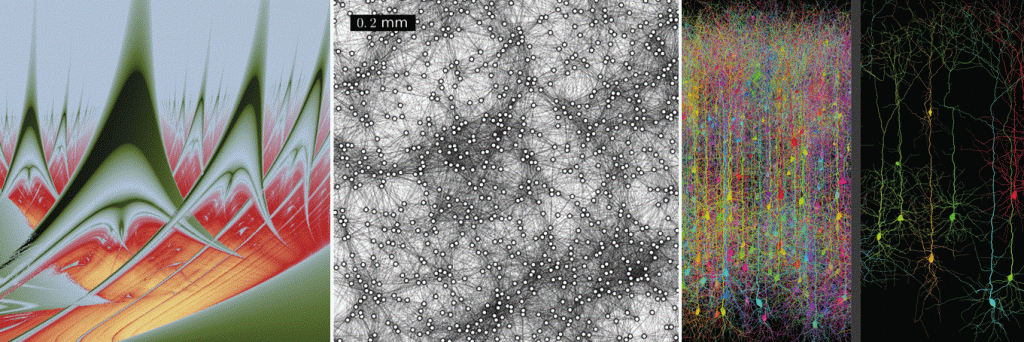
COLLECTIVE INFORMATION PROCESSING
– COLLECTIVE INTELLIGENCE?
Life hinges on information processing: to navigate the world, animals rely on their brains – and thus on the fine, collective interactions of millions or billions of neurons. Importantly, these networks can learn in a self-organized manner, i.e., they update the connectivity and information flow between the neurons without any explicit teacher signal. We aim to understand the basic principles of this emergent information flow or “infogenesis” using the approaches from statistical physics and information theory. Understanding the emergence of infogenesis is very interesting per se; in addition, as evolution has optimized brains over >250M years, our studies can also inspire novel, robust, and energy-efficient compute principles for AI.
Information also spreads in social networks, when people meet, via the press, but also via online platforms. The recent availability of immense online data enables us now to study the spread of information and disinformation in social networks, in the context of the COVID pandemic and beyond. To that end, we gather large data sets from the online platforms. Interestingly, the online information spread reveals principles akin to the ones that determine activity propagation in the brain, suggesting that similar principles shape information spread on these very distinct scales – on the micro-level of neural networks, and on the macro-level of societies.
Viewed through the lens of statistical physics, the dynamics and self-organization observed in social and neural networks exhibit notable similarities: Both feature non-reciprocal, non-local, and non-static (i.e. learning, adaptive) interactions. Thus, both present prime non-equilibrium systems, and in both, information (and misinformation) spreads largely in a decentralized, emergent manner. By studying neural and social networks side-by-side, and abstracting from their domain-specific features, we carve out the basic principles that determine their function and dysfunction. Even more, by abstracting from their specific details, our long-term goal is to develop a general theory of living adaptive networks.
Our publications are available on Google Scholar or arXiv.